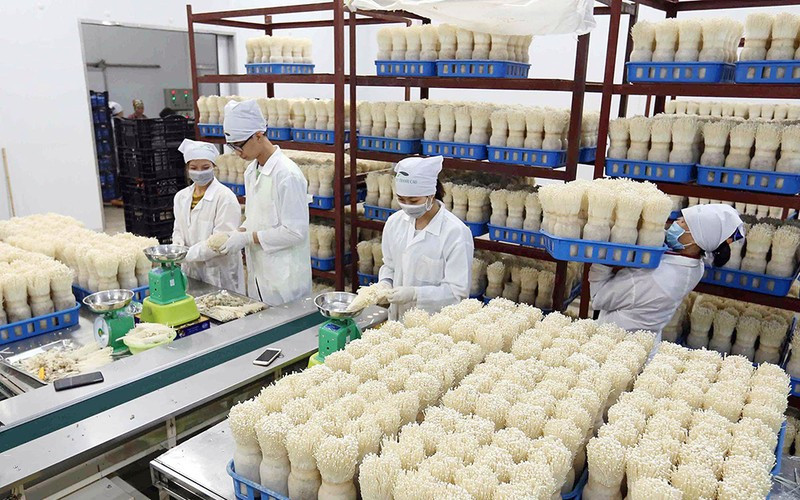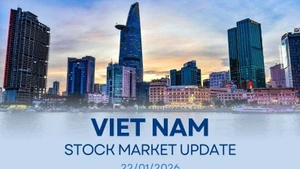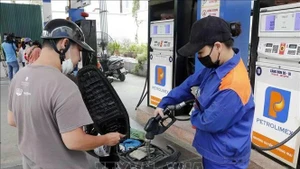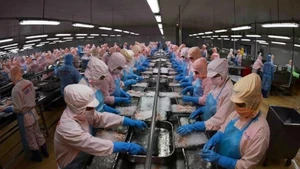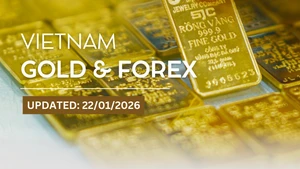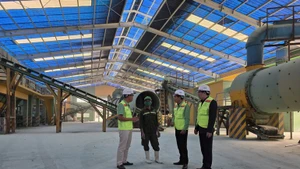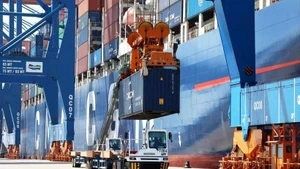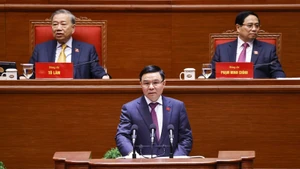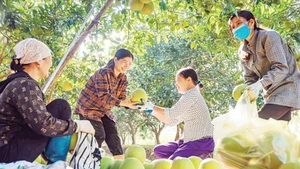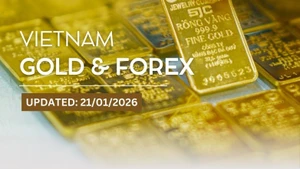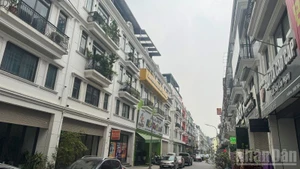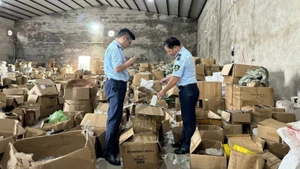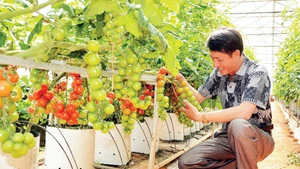However, the financial source for businesses to develop the circular economy is still a big challenge that needs the companion and further efforts of the Government, organisations and businesses in this field.
According to the Ellen MacArthur Foundation (2021), a circular economy means turning the waste output of one industry into an input resource of another or circulating within the business itself.
The circular economy brings many practical benefits to businesses, the economy and society, such as taking advantage of used raw materials, minimising exploitation of resources that are exhausted and unrecoverable, reducing dependence on imported raw materials, making the most of natural resources and contributing to limiting waste and emissions into the environment. In addition, the circular economy helps reduce the risk of excess products for businesses and shortage of input materials, as well as promotes dynamism and creativity in technological innovation, reduces production costs and increases the ability to participate in the global supply chain. The circular economy also enhances the self-reliance of enterprises, contributing to the development of a self-sustaining and sustainable economy, as well as increases efficiency and the connection between economy-society-environment.
Dr. Can Van Luc, chief economist of the Joint Stock Commercial Bank for Investment and Development of Vietnam (BIDV) said, the international experiences in financial resources for circular economy development of enterprises are quite diverse, including funding from international organisations (UNDP, IMF, WB, ADB, etc.), budget capital and development investment capital of the Government and localities, capital sources of enterprises (own capital, mobilized from the stock market), capital sources from direct and indirect investment (FDI and FII capital), and bank credit capital. In particular, capital from bonds and sustainable investment funds accounted for the largest proportion of capital sources for green and circular economy development.
Vietnam has been starting to enter the circular economy era, with the Prime Minister's Decision No. 687/QD-TTg dated June 7, 2022, approving the "Project for the development of a circular economy in Vietnam". This is an important turning point contributing to the concretization of the goal of reducing greenhouse gas emissions, towards the goal of net-zero emissions by 2050, while promoting the application of the circular economy model towards boosting the greening of economic sectors.
According to Climate bonds and HSBC (2021), the size of the sustainable debt market and the green, social and sustainable bonds of Vietnam reached 1.5 billion USD in 2021, five times higher than in 2020. Which, the scale of Vietnam's green bonds reached 1 million USD, accounting for nearly 70% of the total value of sustainable bonds, ranking second in ASEAN. Green debt instruments in Vietnam are issued by the Government, local authorities, and financial and non-financial enterprises (especially the transport and energy sectors). Some outstanding issuances are 425 million USD of Vingroup's Exchangeable Sustainable Bond in the international market and 1.725 trillion VND (nearly 73 million USD) of domestic green bonds of EVN Finance.
However, the scale of Vietnam's green bonds is still small, accounting for only 2.2% of the total size of Vietnam's bond market in 2021. Notably, according to the State Bank of Vietnam, as of August 2022, about 70 credit institutions have built green bank credit products and nine credit institutions have set up support and incentives for green credits. The green credit balance for green projects reached 451 trillion VND (nearly 19.1 billion USD), accounting for 4.2% of total outstanding loans, nearly six times higher than 70.8 trillion VND (nearly 3 billion USD) in 2015. Many commercial banks have strengthened cooperation and attracted ODA capital from international organisations such as ADB, IFC, ADF and IDFC, to give finance for green projects and products such as BIDV, VCB, Vietinbank, Agribank, SHB, HDBank, OCB, etc.
The assessment of the World Bank (WB) in 2021, showed that Vietnam will need to invest nearly 370 billion USD (equivalent to 6.8% of GDP per year) during the 2020-2024 period, to implement the green growth roadmap, with net zero emissions by 2050 and climate change adaptation, of which 35% from the budget and 65% from private sources (in the country and from abroad).
Therefore, to achieve the above-mentioned goals, experts in the fields of finance and environment suggested Vietnam soon develop and implement mechanisms and policies to mobilise financial resources for the circular economy associated with the green economy, such as the National Steering Committee for implementation of Vietnam's commitments at the 26th Conference of the Parties to the United Nations Framework Convention on Climate Change (COP26) and Vietnam circular economy hub (CE Hub) enhances its coordination to develop and promulgate the code of behaviour change and strengthen propaganda and support businesses and people, to raise awareness of circular and green economy, thereby practising the transformation from a linear economy to a circular economy.
It is crucial to make green development a criterion to become an important criterion in attracting FDI and domestic investment in localities, as well as encourage activities of recovery, recycling and innovation (industrial waste treatment, electric vehicles, energy-saving vehicles and natural input materials). Enterprises should develop plans to mobilise feasible financial resources for the development of circular economy projects (method, scale, time, interest rates, issuance standards, and domestic/international investors).
The State Bank of Vietnam (SBV) should soon promulgate Circular guiding credit institutions to manage environmental risks (wider than the content on green credit), to strengthen credit management for circular, green and low-carbon economic sectors, according to the requirements of the Law on Environmental Protection in 2020. The SBV soon promulgates the "Strategy to develop Vietnam's stock market until 2030, with a vision to 2045" and a 5-year development plan towards in-depth development, increased efficiency, and enhancement of the role of an important long-term capital channel, for the economy and businesses that are developing circular and green economy.
On the other hand, Vietnam needs to actively participate in negotiations, attract diverse international capital sources and ODA capital, finance credit projects for the circular economy and strengthen green projects international cooperation, to mobilise financial resources for the green and circular economy, so that enough resources can be mobilised for the three main goals of green growth, net zero emissions by 2050 and climate change adaptation.
